Last chance to see: Frank Bowling's transatlantic takeover
Frank Bowling’s inaugural exhibitions with Hauser & Wirth London and New York celebrate six decades of the artist’s innovative abstraction. Catch the shows before they close, on 30 July (Hauser & Wirth New York) and 31 July (Hauser & Wirth London)

During the last decade, Frank Bowling has, at long last, enjoyed belated recognition. In the last two years alone, the modern master received his first retrospective at Tate Britain and was Knighted on the Queen's Birthday Honours List. The attention on his work, albeit overdue, is only crescendoing.
In the latest chapter of Bowling’s six-decade ascension to acclaim is a transatlantic takeover of Hauser & Wirth galleries in New York and London, on show until 30 and 31 July respectively. These mark the artist’s inaugural exhibitions with the gallery since joining its roster in 2020. With works spanning 1967 to the present day, ‘Frank Bowling – London / New York’ captures how one artist’s inventive approach to the physicality of paint pushed abstraction to its limits.
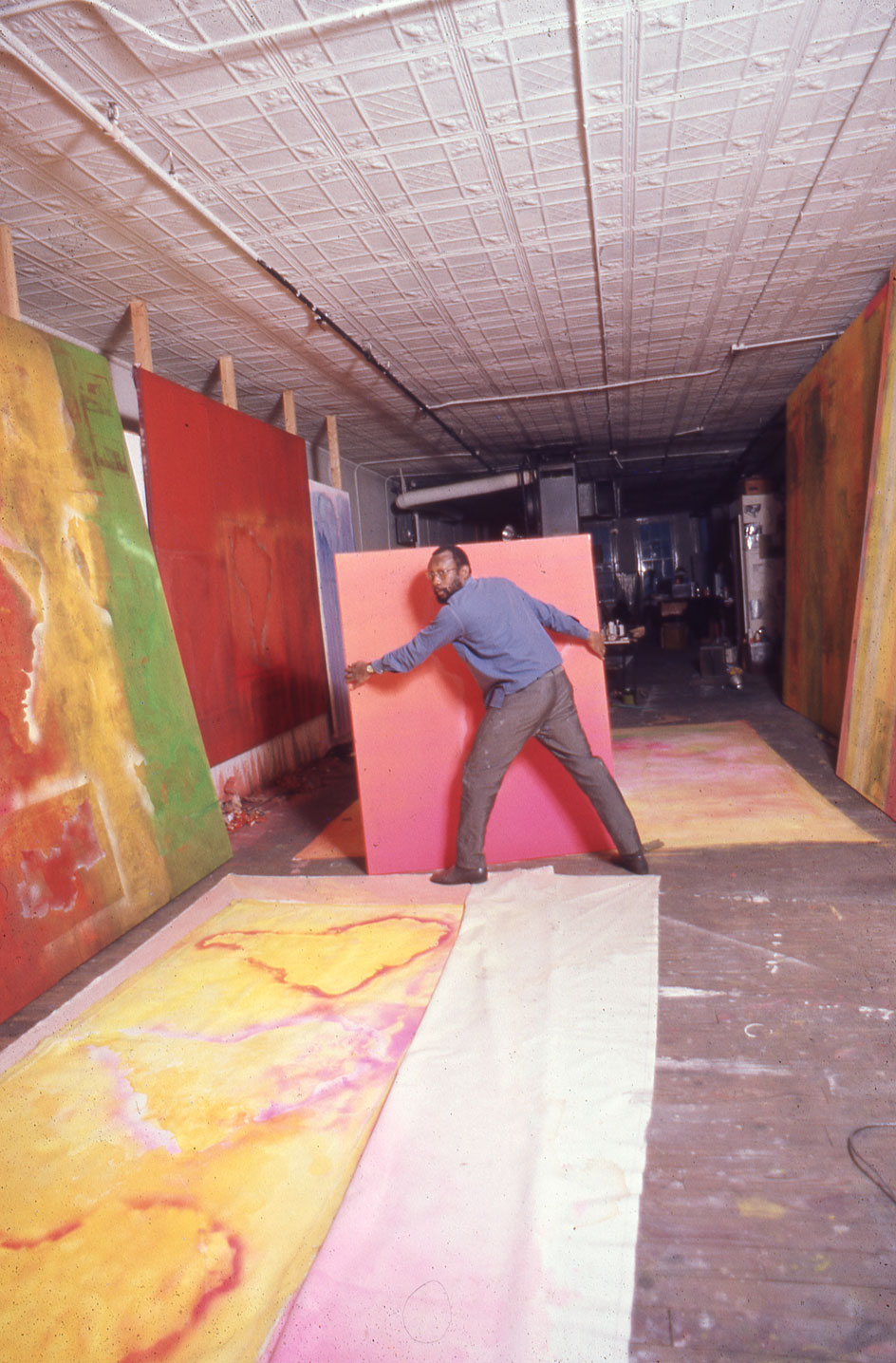
Frank Bowling in his studio at 535 Broadway Studio, c. 1971
As their titles suggests, the simultaneous shows follow Bowling’s life and work between the UK and the United States spanning half a century. Born in Guyana (then British Guiana) in 1934, the artist arrived in London in 1953, graduating from the Royal College of Art in 1962.
He later shuttled between the art scenes in London and New York, maintaining studios in both cities. London is where Bowling trained as a painter. But while his modern contemporaries including David Hockney, Pauline Boty and Patrick Caulfield were parting the art waves in Britain, Bowling – for reasons unclear, but certainly unrelated to the depth of his artistic output – mainstream success didn’t arrive – arguably one of the greatest artistic oversights of the last century.
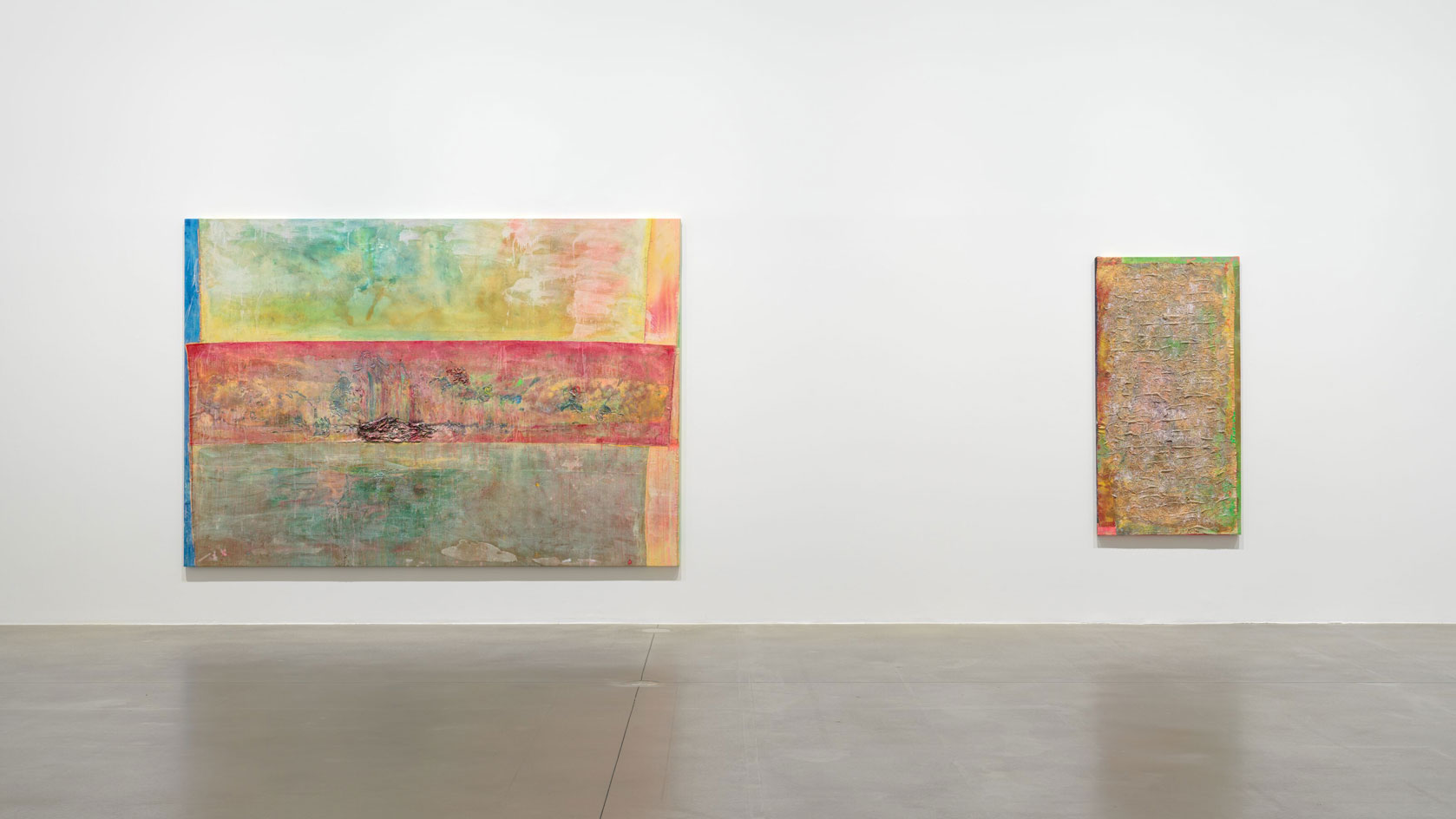
‘Frank Bowling–London / New York’,Installation view, Hauser & Wirth London.

Installation view, ‘Frank Bowling – London / New York’, Hauser & New York, 22nd Street, 2021. © Frank Bowling.
The shows span Bowling’s early engagement with expressive figuration and pop art, to his distinctive blend of poetry and abstraction that continues to evolve today. Visible in his work are the legacies of the English landscape painting traditions of Gainsborough, Turner and Constable. But in 1960s New York, Abstract Expressionism was stirring and Bowling was greeted with a new wave of garish colours and gestural improvisation. He was also met with new dilemmas as the Civil Rights Movement intensified in a city where divisions between the art of Black and white artists remained stark.
RELATED STORY

Bowling would often begin a painting in one city and finish it in the other, and his work, in turn, became a hybrid fusion of cities, cultures and atmospheres. In his words, ‘I would just roll the lot up and move. And I knew that when I got to the other end, I could roll them out again and continue to work.’

Installation view, ‘Frank Bowling – London / New York’, Hauser & New York, 22nd Street, 2021. © Frank Bowling.
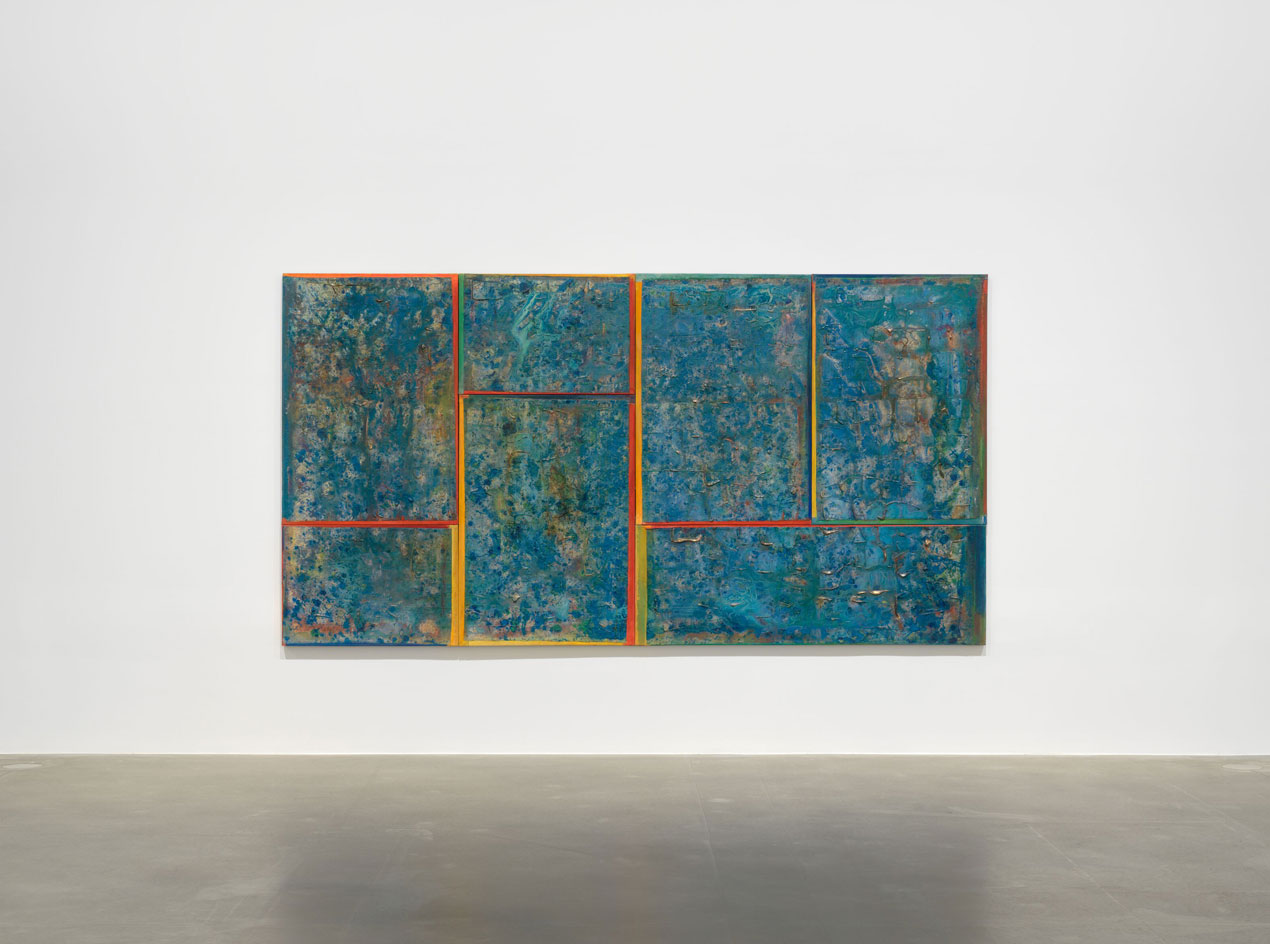
‘Frank Bowling–London / New York’,Installation view, Hauser & Wirth London.
His shows at Hauser & Wirth are as much tales of two cities as tales of two rivers. Bowling’s command of light, colour, and geometry was greatly influenced by the two great bodies of water in his life: The Thames in London and the East River in New York, near to which he maintained his studios.
Within his vast canvases, the water’s swirling reflections feel tangible. Kaleidoscopic acrylic gel is palette-knifed into ripples and bulging protrusions. Through impasto, collage, stitched canvases, found objects and metallic and pearlescent pigments – each vantage point tells a new story.

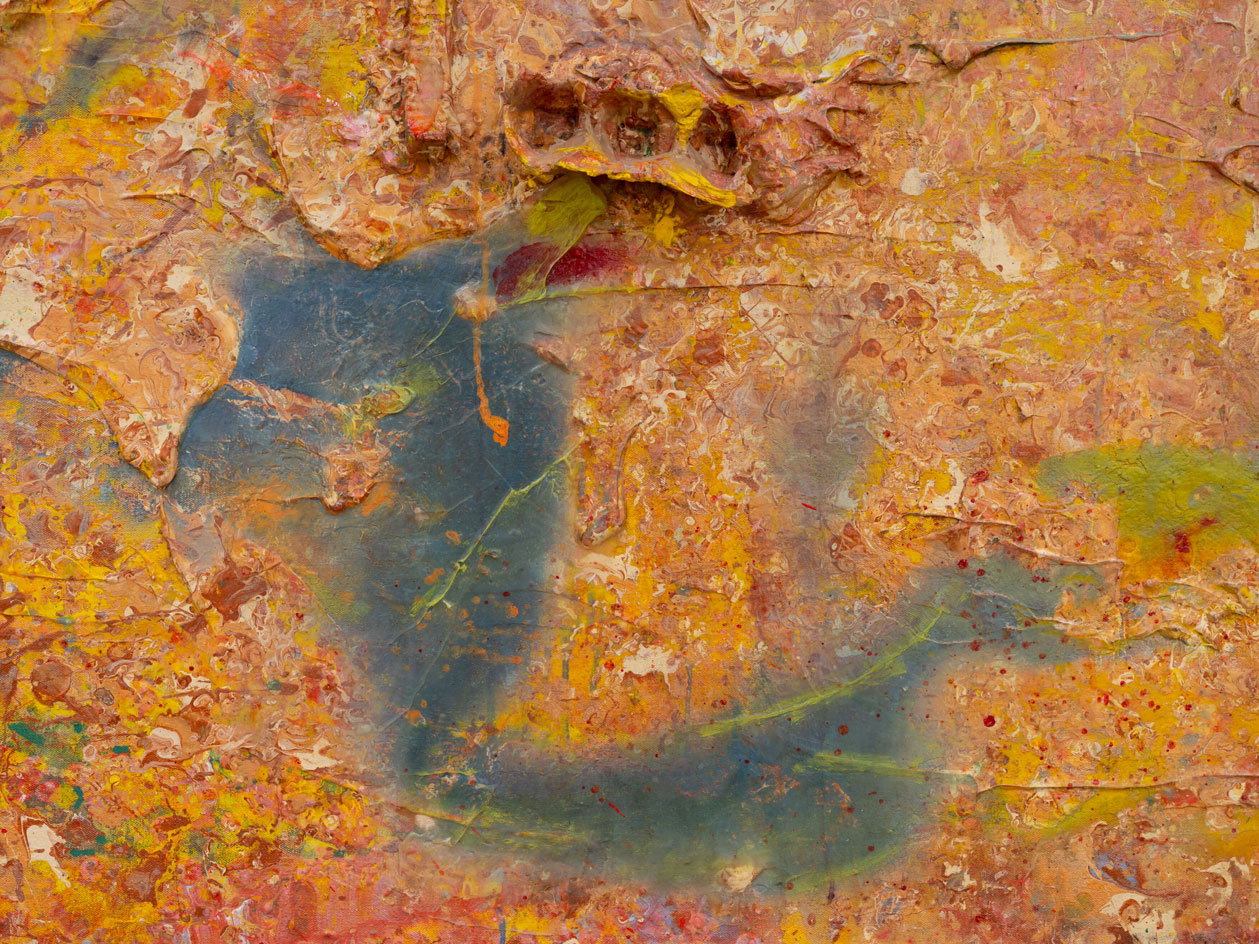
Top and above: Frank Bowling, Sand Circle, 1983, Acrylic, acrylic gel and polyurethane foam on canvas. © Frank Bowling,
Throughout his career, Bowling has had one finger on the pulse of western modernity and another on that of his native Guyana. At 87, he remains a prolific creator, carefully directing the physical construction of his work as assistants pour, drip and splash paint across his vast canvases.
A tireless experimenter, sharp intellectual, and shape-shifting creative, Bowling may have been cast in the moulds of English landscape painting and American Abstract Expressionism, but spend even 30 minutes with his work, and you’ll unearth untold histories and a poetic approach to abstraction that continues to feel mind-blowingly new.

INFORMATION
Receive our daily digest of inspiration, escapism and design stories from around the world direct to your inbox.
’Frank Bowling – London / New York’, until 30 July 2021, Hauser & Wirth New York; until 31 July 2021 Hauser & Wirth London. hauserwirth.com
Harriet Lloyd-Smith was the Arts Editor of Wallpaper*, responsible for the art pages across digital and print, including profiles, exhibition reviews, and contemporary art collaborations. She started at Wallpaper* in 2017 and has written for leading contemporary art publications, auction houses and arts charities, and lectured on review writing and art journalism. When she’s not writing about art, she’s making her own.
-
 Volvo’s quest for safety has resulted in this new, ultra-legible in-car typeface, Volvo Centum
Volvo’s quest for safety has resulted in this new, ultra-legible in-car typeface, Volvo CentumDalton Maag designs a new sans serif typeface for the Swedish carmaker, Volvo Centum, building on the brand’s strong safety ethos
-
 We asked six creative leaders to tell us their design predictions for the year ahead
We asked six creative leaders to tell us their design predictions for the year aheadWhat will be the trends shaping the design world in 2026? Six creative leaders share their creative predictions for next year, alongside some wise advice: be present, connect, embrace AI
-
 10 watch and jewellery moments that dazzled us in 2025
10 watch and jewellery moments that dazzled us in 2025From unexpected watch collaborations to eclectic materials and offbeat designs, here are the watch and jewellery moments we enjoyed this year
-
 Out of office: The Wallpaper* editors’ picks of the week
Out of office: The Wallpaper* editors’ picks of the week'Tis the season for eating and drinking, and the Wallpaper* team embraced it wholeheartedly this week. Elsewhere: the best spot in Milan for clothing repairs and outdoor swimming in December
-
 Nadia Lee Cohen distils a distant American memory into an unflinching new photo book
Nadia Lee Cohen distils a distant American memory into an unflinching new photo book‘Holy Ohio’ documents the British photographer and filmmaker’s personal journey as she reconnects with distant family and her earliest American memories
-
 Out of office: The Wallpaper* editors’ picks of the week
Out of office: The Wallpaper* editors’ picks of the weekIt’s been a week of escapism: daydreams of Ghana sparked by lively local projects, glimpses of Tokyo on nostalgic film rolls, and a charming foray into the heart of Christmas as the festive season kicks off in earnest
-
 This Gustav Klimt painting just became the second most expensive artwork ever sold – it has an incredible backstory
This Gustav Klimt painting just became the second most expensive artwork ever sold – it has an incredible backstorySold by Sotheby’s for a staggering $236.4 million, ‘Portrait of Elisabeth Lederer’ survived Nazi looting and became the key to its subject’s survival
-
 Meet Eva Helene Pade, the emerging artist redefining figurative painting
Meet Eva Helene Pade, the emerging artist redefining figurative paintingPade’s dreamlike figures in a crowd are currently on show at Thaddaeus Ropac London; she tells us about her need ‘to capture movements especially’
-
 Ed Ruscha’s foray into chocolate is sweet, smart and very American
Ed Ruscha’s foray into chocolate is sweet, smart and very AmericanArt and chocolate combine deliciously in ‘Made in California’, a project from the artist with andSons Chocolatiers
-
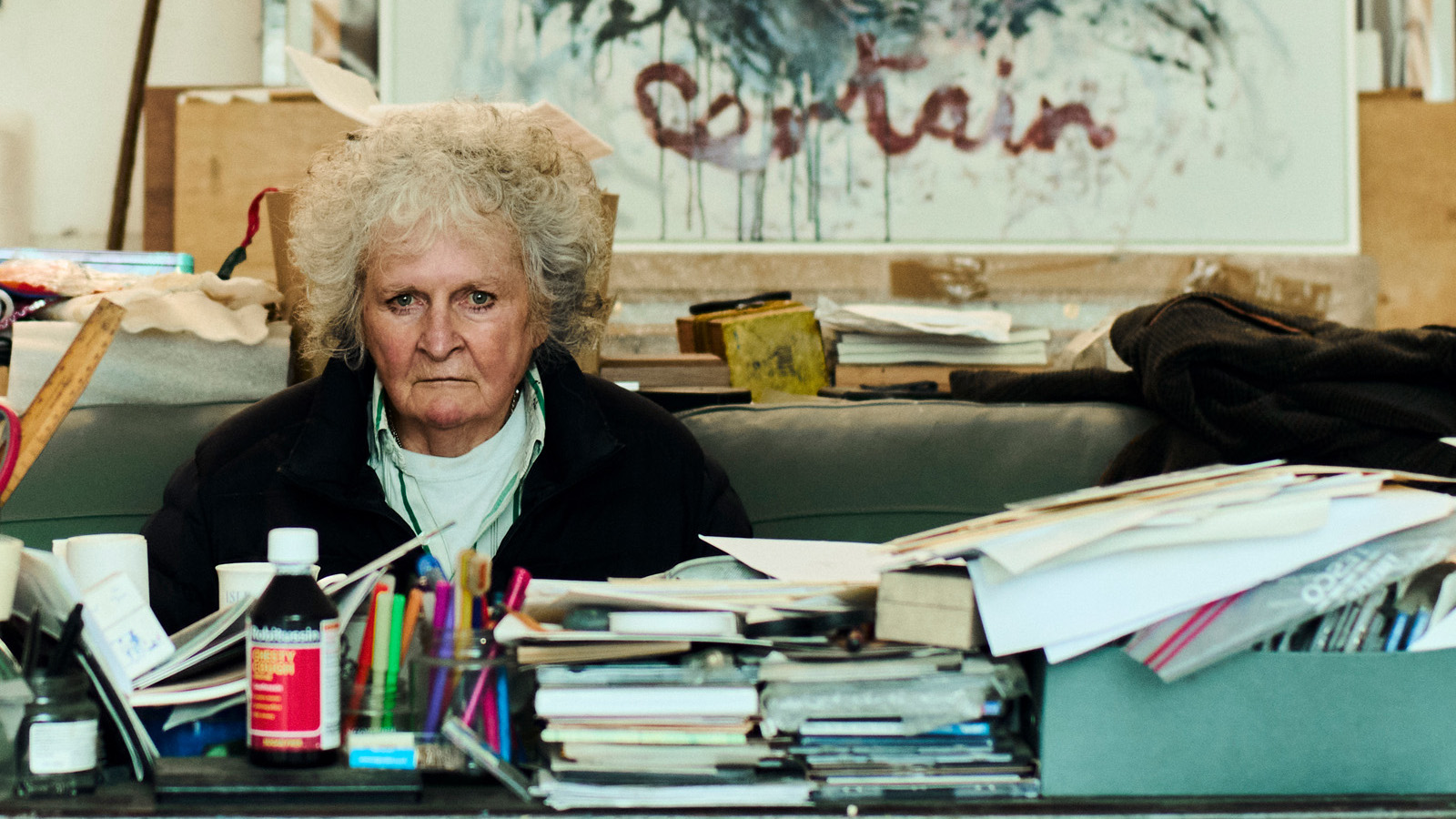 Maggi Hambling at 80: what next?
Maggi Hambling at 80: what next?To mark a significant year, artist Maggi Hambling is unveiling both a joint London exhibition with friend Sarah Lucas and a new Rizzoli monograph. We visit her in the studio
-
 Out of office: The Wallpaper* editors’ picks of the week
Out of office: The Wallpaper* editors’ picks of the weekThis week, the Wallpaper* editors curated a diverse mix of experiences, from meeting diamond entrepreneurs and exploring perfume exhibitions to indulging in the the spectacle of a Middle Eastern Christmas